Want to know why some ideas catch on and others don’t? “Made to Stick” shows us how to make your ideas stick in people’s minds. This book is perfect for marketers, teachers, leaders, or anyone who wants their ideas to be more persuasive and influential.
The idea of “stickiness” actually comes from Malcolm Gladwell’s book “The Tipping Point.” It’s about making your ideas so clear and impactful that people can’t forget them. “Made to Stick” takes this idea further, giving you the tools to make your own messages stick.
Who are Chip and Dan Heath?
- Chip Heath is a professor at Stanford Graduate School of Business, where he teaches courses on business strategy and organizations. For years, he taught a course on “How to Make Ideas Stick.”
- Dan Heath is a Senior Fellow at Duke University’s CASE center, which supports social entrepreneurs. He also worked as a researcher for Harvard Business School and co-founded the educational startup Thinkwell, which reinvented textbooks using video technology.
- Together, they have co-authored several bestselling books for business leaders, including “Made to Stick,” “Switch,” and “Decisive.”
🎓 1. The SUCCESs Model: Your ideas need six key principles to stick – keep it Simple, add something Unexpected, be Concrete, show it’s Credible, make it Emotional, and tell it as a Story
Some ideas just stick. Think about those classic fairy tales, wild conspiracy theories, iconic marketing campaigns, or crazy stories about stolen kidneys. For some mysterious reason, they grab our attention in a way that makes us remember and share them. What’s their secret?
After studying hundreds of those naturally sticky ideas, Chip and Dan Heath noticed common patterns and principles. By applying those to our own ideas, we can make them a lot more sticky, memorable, and impactful.
This brings us to the essence of the “SUCCESs Model.” For an idea to stick, it must be:
- Simple: Cut through the noise by focusing on the core of your idea.
- Unexpected: Grab attention by breaking patterns.
- Concrete: Use vivid details instead of abstract concepts.
- Credible: Build trust through authoritative sources or relatable examples.
- Emotional: Connect with your audience on a personal level.
- Stories: Narrate your idea in a way that compels action.

Here’s a great example of how to translate a boring idea into a sticky one. Movie theater popcorn was packed with saturated fat—way over the recommended daily intake. A public health organization wanted to explain this to people, but they knew that saying “37g of saturated fat” was too boring and forgettable.
So, what did they do? They said a bag of medium popcorn contains the same amount of saturated fat as eating a huge breakfast of bacon and eggs, a Big Mac for lunch, and a steak dinner—combined! Television stations brought the idea home by visually putting the popcorn side-by-side with a full table of fatty food.
This shocking comparison sparked a big public conversation and a boycott. Soon, theaters stopped cooking their popcorn in coconut oil. Why was the ideas so impactful? Because it was communicated in a way that followed the SUCCESs model.
- Follow the SUCCESs model: Keep it simple, surprise people, be clear, be believable, make it emotional, and tell a story.
Another book you might like is “Influence” by Robert Cialdini. It talks about how to make ideas credible by applying two principles: authority and social proof. Cialdini says, “the principle of social proof […] states that one means we use to determine what is correct is to find out what other people think is correct.”
"Made to Stick" says we can grab attention by surprising people through breaking a pattern they have come to expect, a principle called .
Concreteness
Simplicity
Spontaneity
Unexpectedness
🤯 2. The Curse of Knowledge: Talk about your ideas in a way that’s easy for everyone to get, like you’re explaining it to a beginner
You might think some of these principles are just common sense, right? But there’s a sneaky trap called the “Curse of Knowledge.”

The Curse of Knowledge says that once you know something really well, it’s super hard to see things from the viewpoint of someone who doesn’t.
There’s a “tapper vs. listener” study that clearly demonstrates this Curse. They had one person tap out the rhythm of a well-known song on a table while another person listens tries to guess the song. The tapper, knowing the tune, expects the listener to identify it correctly about 50% of the time. However, listeners only guess the song correctly 2% of the time.
That’s because when you can “hear” the song in your head, it’s tough to imagine not hearing it. It highlights how difficult it is to put ourselves in the shoes of someone who doesn’t have the same information we do. The information imbalance makes it challenging for any expert to explain their ideas to a beginner.
It’s like when a CEO talks about “leveraging strategic synergies.” To them, it’s a familiar tune they’ve been humming along to for 30 years, backed by hundreds of discussions about business strategy. But to everyone else? It sounds like meaningless corporate-speak. It’s just random tapping, a tune they can’t catch.
- Overcome the “Curse of Knowledge” and make your ideas resonate with everyone by simplifying complex, abstract ideas into relatable, impactful stories.
The "Curse of Knowledge makes it hard for us to share our knowledge because we cannot easily our listener's state of mind.
Change
Simplify
Imagine
Validate
🎯 3. Keep it Simple: Find the core of your idea and connect it to things people already know
Simplicity is crucial in making an idea stick. It’s about distilling complex information into something easily understood and remembered. The essence of simplicity lies in two major parts: finding the core of your message and making it compact.
Finding the Core
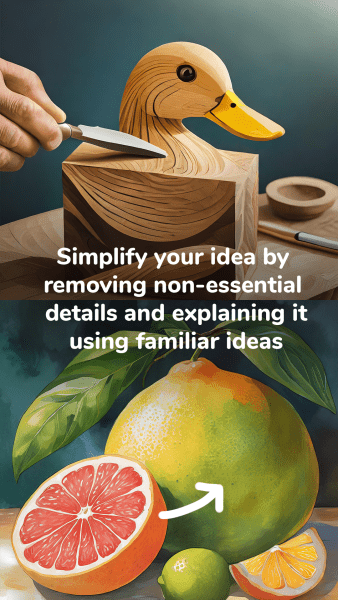
- Remove any details that are not absolutely essential. Focus on the single most important point you want your audience to grasp. This process creates a short yet profound idea that is packed with meaning. Good examples of this are proverbs like “Do unto others as you would have them do unto you”—a simple phrase that can take a lifetime to master.
- The concept of “Commander’s Intent” in the military exemplifies this approach perfectly. It boils down the most crucial goal of a mission to a simple statement, such as “capture the building.” This allows soldiers to remain focused on the overarching objective without getting lost in a long list of complex instructions.
- Try the Inverted Pyramid technique used in journalism, which emphasizes stating the most important information first, then gradually adding more detail. This method ensures that the core message is delivered immediately, following the principle of “don’t bury the lead.”
Making It Compact
- Use Flags to Tap Existing Knowledge (Schemas): By connecting new information to something already familiar to your audience, you can significantly speed up the learning process. For example, most people have an understanding of what a grapefruit is. If you’re introducing someone to a pomelo, describing it as a “supersized grapefruit” taps into their existing schema of grapefruit, making the new information more accessible and easier to remember.
- Create a 1-Line Hollywood Pitch for Your Idea: This technique involves summarizing your concept by comparing it to something well-known. It’s an effective way to convey the essence of your idea quickly. For instance, describing “Avatar” as “Pocahontas in space” instantly gives someone a familiar framework to understand the movie’s premise. Similarly, to explain what Turo does, saying it’s “Airbnb for cars” immediately clarifies the concept by referencing a known model.
- Try a Generative Analogy: This involves using an analogy that not only explains a concept but also encourages the audience to generate related ideas and feelings on their own. For example, Disney refers to its employees as “cast members.” This terminology isn’t just a label; it’s an analogy that helps employees see themselves as part of a larger show, which in turn influences them to act in ways that contribute to the magical experience Disney aims to provide for its guests.
- Identify the most important part of your message by removing any details that don’t directly support the main point.
- Make it compact by using flags — connecting new information to familiar concepts or “schemas,” making it easier for your audience to understand and remember.
Keeping things simple is also key to getting people hooked on a product, app, or website. In the book “Hooked,” Nir Eyal explains that the easier your product is to use, the more people will want to use it. And how do you do that? By removing steps needed to complete a task.
For example, TikTok became hugely popular because it lets you swipe up to instantly watch a new video, skipping the hassle of choosing what to watch next. In the same way, a local restaurant can put their menu on a popular food delivery app, making it easy for people to order their food.
In "Made to Stick," the principle of simplicity begins with finding the of an idea.
Details
Core
Principle
Schema
❓ 4. Add Something Unexpected: Get attention by breaking expectations and keep interest by creating a “curiosity gap”
In a world cluttered with information, the first step to any effective communication is getting someone’s attention, and the next step is holding onto it. How do we achieve this? By sparking emotions of surprise and curiosity in your audience, using the power of the unexpected.
Get attention with surprise

- Break an expected pattern. Our brains are like prediction machines, always trying to guess what will happen next so we can make correct decisions. That means we learn to ignore consistent patterns, but a sudden change in our environment makes us sit up and pay attention. When our prediction machine fails, we feel surprise and become focused on understanding why.
- A striking example is a minivan commercial. It starts like any other car ad… but ends in a sudden collision. The unexpected twist? It’s a message about seatbelt safety. The commercial ends with the words, “Didn’t see that coming? Nobody does.” It’s a perfect illustration of how to break an expected pattern to create surprise and deliver an important message effectively.
- Focus on the counterintuitive implications of your idea. To create a message that breaks patterns, you need to find out what is counterintuitive about your idea and its consequences for people’s behavior – or different than what people would naturally do.
For example, Southwest Airlines operates by the core idea “We are THE low-fare airline.” At first, this sounds like common sense, because every airline would want to cut costs where possible. So former CEO Herb Kelleher drove the message home by giving the example that if a marketing person told him customers would love a chicken Caesar salad on their flight, they would still not serve it because it goes against their core philosophy.
The business book Contagious by Jonah Berger is all about how to make things go viral and it also says, “One way to generate surprise is by breaking a pattern people have come to expect.” A great example is the series of videos called “Will it Blend?” from Blendtec, a company that makes blenders. Instead of blending food, they blend objects like iPhones and marbles, and this unexpected twist makes people watch and share. Anyone looking to make their business ideas or content go viral should check out “Contagious” for tips to get noticed.
Keep attention with interest
- Use Gap Theory. The idea is to reveal a gap in your audience’s knowledge, then gradually fill it. This method relies on people’s natural curiosity and desire to close gaps in understanding, making them become more actively engaged with your content. Basically, you want them to begin asking questions in their mind related to your idea that they want the answers to.
- Make them commit to a prediction. This makes your audience more invested in the outcome, eager to see if their guesses hold up. A school teacher could begin a class on climate change by asking their class, “How many cars are there in America?”
- Tell a mystery story. Instead of just telling facts, take them on a journey. Begin with setting the context, introducing a situation or statistic that makes people say “Huh?” This initial confusion is a hook, pulling listeners deeper into your idea. They you slowly unravel the mystery by gradually filling in more details. A business school professor could say, “Did you know McDonald’s primarily makes money not by selling fast food, but through real estate?”
- The news teaser method. Instead of focusing on what facts you want to share, ask yourself what questions you want your audience to ask. This shift in perspective is critical. For instance, announcing “There’s a new drug in the community” is one thing, but suggesting “A new drug, possibly in your medicine cabinet, is causing concern…” transforms the information into a question that demands an answer.
- Surprise your audience using unexpected twists, like the ending of the minivan ad, to grab attention immediately. Break a pattern.
- Make them guess and ask questions, reveal a gap in knowledge then slowly fill it in, to keep their interest alive though curiosity.
Revealing a missing piece in your audience's understanding and then filling it in is known as .
Gap Theory
Curiosity Method
Knowledge Theory
Teaser Method
🧱 5. Be Concrete: Make your idea clear using real, vivid examples people can easily understand and remember
To make your ideas stick, it’s crucial to be concrete. Our brains latch onto vivid, sensory details far better than abstract concepts. For example, John F. Kennedy’s goal to “put a man on the moon” was concrete and painted a vivid picture that nobody could forget. If JFK had been a CEO, then he might have spoken of “strategic objectives to increase space travel share,” abstract concepts no one would have remembered.

- The Velcro Theory of Memory. Many people believe our memory works like a filing cabinet, but Chip and Dan Heath say it’s actually more like velcro, the hook and loop fastener. Each concrete image is like a hook that allows an idea stick in more of our brain’s existing hoops. This is because concrete images trigger sensory memories—touch, taste, smell, sound—making the idea more memorable.
- The Curse of Knowledge and Concrete Communication. Experts often discuss high-level concepts that tie many details together, but they may miss the concrete details needed for non-experts to grasp the idea. For instance, chess masters talk about overarching strategies, while beginners think in terms of specific moves like “where do I move the queen next?” Making your message concrete bridges this gap, ensuring everyone can follow along.
To make your ideas concrete:
- Use real-life objects and sensory information. Illustrate your idea with objects you could touch, feel, smell, etc. A perfect example of this is the velcro analogy for memory we just heard from this book. Kids learn math better with concrete images rather than just numbers, so they can visualize the problem to understand it. For example, “Mary had 3 apples, then she got 2 more, but gave 1 to Tommy. How many apples does Mary have now?”
- Tell a story. Hearing a story makes us visualize it playing out in our heads. That’s what makes the teachings of Jesus so enduring – he mostly spoke in parables. Instead of lecturing people, he painted images of lost sheep and mustard seeds. Nordstrom doesn’t just tell their employees the abstract idea of “world-class customer service,” they show it using stories of their employees doing the unexpected, like ironing a customer’s shirt.
- Choose a specific target. A definite, visual target helps coordinate the efforts of many people, especially in massive organizations. For example, Saddleback Church, a 50,000-person megachurch in California, has a very specific image of who they want to reach. He’s called “Saddleback Sam,” a 35-year old professional man with a college degree, married with 2 kids, but wary of organized religion. This clear image keeps all their communications and church programs relevant to their members.
- By grounding your ideas in concrete examples and vivid details, you ensure they are communicated in a clear way that sticks. This approach makes a wider audience resonate with and remember your message.
Steve Jobs was a master in using concrete images to communicate the benefits of new tech products in a simple and memorable way. When Apple launched the iPod, he didn’t say it had “a 5 gigabyte hard drive” – instead he said “1,000 songs in your pocket,” instantly making the storage capacity tangible to consumers.
Or what about the time he launched the first Macbook Air… by bringing a standard office envelope on stage, then pulling the new laptop from the envelope? This demonstrated the laptop’s unprecedented thinness and portability better than numbers ever could.
According to the Velcro Theory of Memory, brains best remember information through .
Ideas
Numbers
Feelings
Images
🤝 6. Show it’s Credible: Get them to believe your ideas with solid proof or expert opinions
To persuade people, your ideas need to be backed by credible evidence. Whether it’s through expert opinions or solid proof, credibility convinces your audience that your message is trustworthy. “Made to Stick” explores two sources of credibility: external and internal.
External Sources of Credibility

- Authorities: This includes endorsements from recognized institutions like the FDA or CDC, which tend to have no vested interest to promote the message. Another examples is when a toothpaste says they are recommended by “9 out of 10 dentists.”
- Celebrity Endorsements: When celebrities recommend something, people want it to be more like the celebrity they admire. A prime example is when Nike signed on Michael Jordan.
- Anti-Authorities: Sometimes, the most compelling endorsements come from those with personal experience, such as a family member recommending a restaurant or a former smoker warning about smoking’s dangers. Their stories resonate, not because of the person’s status, but because they’re seen as honest and trustworthy.
Internal Sources of Credibility
- Vivid Details: Research shows that including specific details can make an argument more persuasive, even if those details are not very relevant! For instance, jury members were more likely to believe that a woman was a good mother when they heard the detail that her son had a toothbrush shaped like Darth Vader.
- Statistics, Made Relatable: This is not telling people numbers, but transforming those numbers into something people can relate to, so you can illustrate a meaningful relationship. The human scale principle says to relate statistics to something in most people’s experience.
Like when experts wanted to illustrate the danger of the world having a stockpile of 5,000 atomic bombs, they used BB balls. They dropped one BB into a bucket, which made a scary sound, saying that was like one atomic bomb over Hiroshima. Then they dropped 5,000, which made a terrifying and deafening noise. - Direct Experience: Encourage people to test your claim themselves. Wendy’s famous “Where’s the beef?” campaign invited customers to see firsthand that their burgers had more beef, leveraging direct experience as the ultimate proof. Ronald Reagan won his election by a landslide in 1980, not by citing economic statistics, but by asking the memorable question, “Before you vote, ask yourself if you are better off today than you were four years ago.”
- The Sinatra Test: Sometimes, a single vivid example can be more persuasive than a barrage of statistics. For instance, if a company provided security for Fort Knox, then most companies would assume it must be good enough for them. The name comes from Sinatra’s famous song: “If you can make it here [New York], then you can make it anywhere.”
In the classic book “Propaganda” by Edward Bernays, the father of public relations, he explains a similar idea called “high-spotting.” “High-spotting” is about drawing people’s attention to specific standout features of your product or to memorable events that make a point.
A notorious example was a publicity campaign Bernays organized for the American Tobacco Company. In the 1929 Easter parade in New York, he had a group of fashionable young women light cigarettes, calling them “torches of freedom.” It was positioned as a demonstration of women’s independence and equality. The stunt received significant media coverage and broke social taboos against women smoking in public.
- Credibility isn’t just about having the facts; it’s about presenting them in a way that connects with your audience, so your ideas are not only heard but also believed.
- By combining external validation with internal evidence, and making statistics relatable and personal, you can turn skepticism into trust.
Which credibility type relies on someone else's personal experience to build trust in their message?
Anti-authority
Statistical evidence
Celebrity endorsement
Expert opinion
💖 7. Make it Emotional: Make people care about your idea by connecting on a personal, emotional level
Why do some ideas spark action while others fade away? The secret lies in making your audience feel something. When people connect emotionally with your message, they’re not just more likely to remember it; they’re more likely to act on it.

- From Statistics to Personal Stories. It turns out, our brains aren’t moved by numbers the way they are by narratives. It’s about making the problem personal. A study by Carnegie-Mellon University revealed that individuals donated more to a cause when presented with the story of a single, relatable person—like a seven-year-old girl in Mali—than when faced with broad statistics about world hunger.
Mother Teresa nailed it when she said, “If I look at the mass, I will never act. If I look at the one, I will.”
- Finding the Right Emotion Not all emotions drive action equally. An anti-smoking campaign targeted teenagers not by highlighting the dangers of smoking but by tapping into teens’ general sense of resentment – and pointing out the injustice of people being lied to by tobacco companies. This strategy of aligning with a potent, relatable feeling made the message far more effective.
- Linking to What Matters When your idea aligns with something already important to your audience, it resonates deeper. It’s not about changing their values but connecting your message to what they already hold dear. An organization did this by transforming the ideas of “sportsmanship” from being connected with losing into “honoring the game.”
- Appealing to Identity. Powerful messages align with the identity of your audience, how they see themselves. You can leverages group belonging to encourage behavior change. In the 1980’s, Texas decreased littering by 29% in one year, not by appealing to the environment, but to Texan’s pride in their state, with clever campaign under the tagline “Don’t Mess With Texas.”
- In short, making your idea stick is about touching hearts as much as it is about engaging minds. When your message makes people feel something—whether it’s empathy, outrage, pride, or belonging—they’re not just more likely to remember it. They’re more likely to act on it.
What strategy significantly increased donations in a Carnegie-Mellon University study on charitable giving?
Group images
Personal story
Compelling statistics
Scientific data
📖 8. Tell it as a Story: Get people to act on your idea by bringing it to life in a compelling narrative
Why just share an idea when you can bring it to life? Stories don’t just inspire and motivate action; they convey information by providing a mental rehearsal for real-life situations.

- The Power of Mental Simulation. Think of stories as the brain’s flight simulator. When we hear a tale, we don’t just listen—we experience, simulate, and learn from it. This mental practice can provide as much as 2/3 of the benefits of real-world experience. It’s why professionals, like firefighters and nurses, share stories—to multiply their experiences and prepare for future challenges. In one UCLA study, students who visualized each step of a problem-solving process outperformed those who simply envisioned success.
- Inspiration to Act. Stories can also spark the motivation needed to overcome obstacles. From the classic underdog victories in “David and Goliath” or “Star Wars” to real-life transformations like a Weight Watchers testimonial. These narratives push us to persevere, connect, and think creatively. They show us what’s possible and inspire us to act.
- Overcoming the Curse of Knowledge. Consider an experienced manager urging their team to “maximize synergy.” To them, this phrase is loaded with memories of team breakthroughs and hard-won victories. Yet, to a newcomer, it just sound empty jargon. Sharing a story, however, brings everyone onto the same page. The manager could recount a specific project where teamwork turned failure into success, making the concept of “maximizing synergy” vivid and meaningful. Stories translate personal insights into universal lessons, effectively bridging the gap between expert knowledge and novice understanding.
- In essence, telling your idea as a story transforms it from a flat concept into a simulated living experience, encouraging deep understanding, and inspired action.
- It’s not just about sharing knowledge; it’s about delivering it in the most engaging way – and that’s through stories.
- Audit Your Idea: Write down an existing idea and evaluate it, using the SUCCESs model as a checklist. Does it include all six principles? If not, refine it until it does.
- Practice Explaining Simply: Choose a complex topic you’re familiar with and practice explaining it to someone with no background in the area. Use analogies or metaphors to make it relatable.
- Identify the Core: For your next project or message, distill its essence into one sentence. This helps you stay focused on what’s truly important.
- Use the Element of Surprise: In your next presentation or article, begin with an unexpected fact or story. Note how it affects engagement and recall.
- Use Specific Examples: Next time you’re trying to make a point, anchor it with a concrete example or case study to illustrate your idea vividly.
- Gather Testimonials: Collect and showcase testimonials or endorsements from credible sources for your product, service, or idea to enhance its trustworthiness.
- Connect Emotionally: In your communications, focus on creating an emotional connection. Share a personal story or highlight how your idea affects individuals on a personal level.
- Craft a Story: Turn your idea or message into a story, complete with characters, challenges, and resolutions. Use this in your next meeting or marketing material.

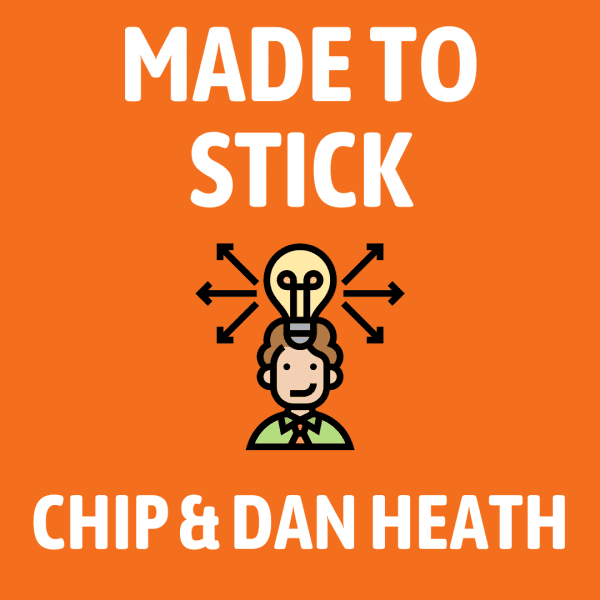
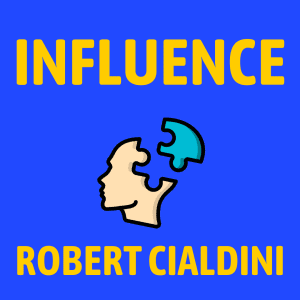

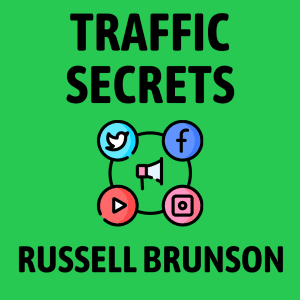





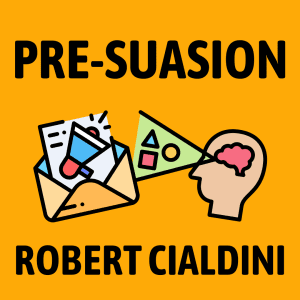


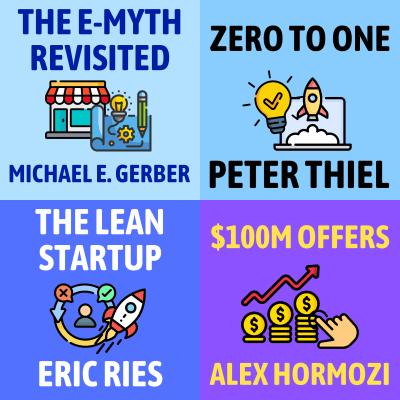




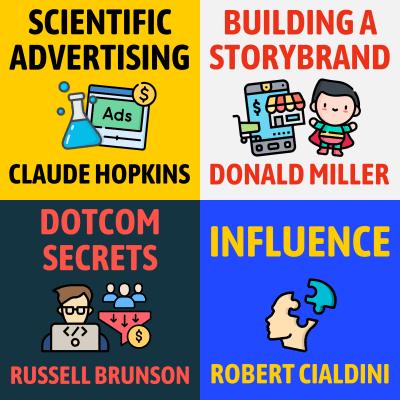
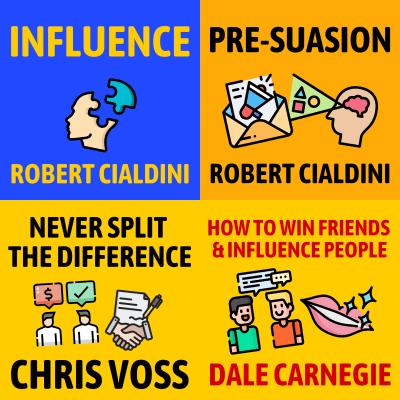
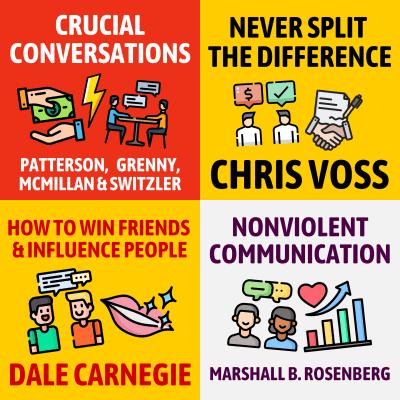

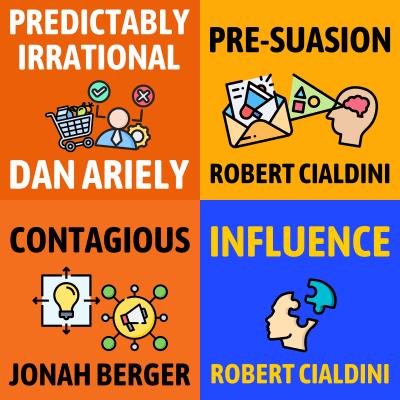
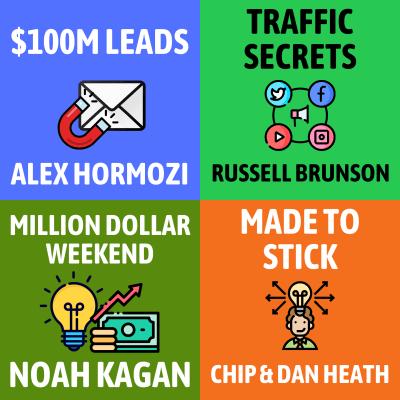











Community Notes